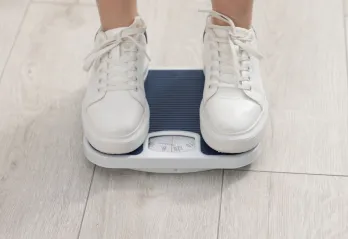What is Semaglutide - And How It Can Affect Your Muscle

Semaglutide is a medicine many people are using for weight-loss or for type 2 diabetes. It can help you lose fat, lower blood sugar, and reduce body weight. But there’s something important to know: when people lose weight, sometimes they lose muscle too. And losing too much muscle isn’t good, especially for older adults.
This article explains what research is showing about semaglutide and muscle loss, why muscle matters, and what you can do to protect your muscles if you’re using semaglutide.
What the Research Says
Here are real findings from recent studies:
- One study of older adults (65 or older) with type 2 diabetes treated with semaglutide found that over 24 months, those taking semaglutide lost more muscle mass and strength than similar people who weren’t on it. Measures like grip strength and walking speed also declined.
- Another study found that up to 40% of the weight people lose on semaglutide might come from lean mass (which includes muscle) rather than just fat.
- Researchers also reported that older adults, women, and people who do not eat enough protein are more likely to lose more muscle when losing weight with semaglutide.
Why Losing Muscle Is a Problem
Why does muscle matter, especially as we get older?
- Muscle helps you stay strong-to walk, get up from a chair, go up stairs, carry things. Losing muscle can make these everyday tasks harder.
- Muscle helps with your blood sugar-muscle uses sugar from your blood. Less muscle can make it harder to keep your blood sugar stable.
- Muscle helps protect bones, prevent falls, help with balance. Especially as we age, falling or getting hurt becomes a bigger risk.
So keeping as much muscle as possible is important for staying independent, safe, and healthy.
What You Can Do to Keep Your Muscle While Using Semaglutide
Even though semaglutide may increase risk of muscle loss, there are things you can do to protect your muscle. These tips work well for adults and seniors.
1. Eat enough protein
- Protein is the building block your body uses to maintain (and build) muscle.
- Studies show that people on semaglutide who eat more protein lose less muscle.
- Good sources: eggs, chicken, fish, beans, dairy, nuts. If needed, lean meats or protein supplements (check with your doctor or dietitian).
2. Do strength / resistance exercise
- This means lifting weights or using resistance bands, or even bodyweight exercises (like squats, push-ups or sit-to-stand).
- It’s especially helpful for older adults, because it signals your body to keep muscle even when weight loss is happening.
3. Start slow & build up
- If you’re not used to exercise, begin with small, doable goals. Maybe 1-2 strength sessions per week.
- Gradually increase the number, or how much you’re lifting, as you feel stronger.
4. Regular monitoring
- Talk with your doctor about checking your muscle strength (for example, grip strength) or walking speed. These are simple tests.
- Also monitor weight loss so it’s gradual rather than too fast-rapid weight loss tends to take more muscle.
5. Balance diet + nutrition
- Besides protein, make sure you’re eating enough calories overall. If you cut calories too much, your body may break down muscle.
- Include foods that have vitamins and minerals that support muscle and bone health-like calcium, vitamin D, and others (as advised by your doctor).
6. Tailor it to your age & situation
- Older adults may already have some muscle loss (called sarcopenia). In those cases, it’s even more important to be gentle and consistent.
- Always check with healthcare providers before starting new exercise or changing diet, especially if you have other health conditions.
Key Messages
- Semaglutide can help with weight loss and blood sugar control. But many people lose some muscle along with fat.
- Muscle is very important for strength, daily life, blood sugar control, fall prevention, and overall health-especially in older adults.
- You can protect your muscles while using semaglutide. Eating enough protein, doing strength exercise, going slow, and checking in with your medical team are powerful tools.
Author
